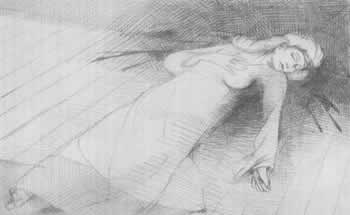St Woolos Cemetery - The Haunted Holy Ground
From the book "The Haunted Holy Ground" by Mike Buckingham and Richard Frame published in 1988.
Murder - And Suicide - Most Foul
By Mike Buckingham and Richard Frame
First published 1988
© Mike Buckingham and Richard Frame 2012
A number of killings rocked the Pill area of Newport in the late 1880s, but of these the shooting of Mrs Margaret Manship by her enraged husband followed by his suicide rank as the most horrifying.
Margaret Manship was laid to rest in the graveyard at Henllys between Bettws and Cwmbran but Jacob, her husband who was driven to a rage of jealousy by the real or imagined infidelities of his wife rests in the cemetery which is the subject of our book.
When death knocked on the door of the humble workman’s cottage in Prothero’s Row, Pill, in the November of 1889 it was swift and dramatic in executing its evil dealings.
A description of the horrific scene cannot be better described than in the words of the Star of Gwent reporter who arrived on the scene of carnage that frightful day.
“I unhasped the door leading to where the fearful deed had been committed and continued into the house itself,” he wrote in an account which spared no detail.”
“On the floor lay the body of the murdered woman. Her features were pale and passive although her temples were covered with blood. The body lay straight upon its back, the head reclining over the left shoulder. The right arm lay across the breast while the left stretched out at full length upon the floor, the fingers being distended.”
“The body was covered only by a nightdress thus proving that the woman had been murdered before she had risen. The floor of the room was covered with blood. The wound inflicted, immediately behind the right ear, was a terrible one; almost as large as an orange and from this torrents of blood flowed which in a very few minutes robbed the woman of existence.”
“But for the blood which made the features such a horrible appearance the murdered woman would have looked pleasant and comely, her age being about 39.”

drawing by David Pow
All this time the husband, Jacob, or “Jake” Manship was sat in a chair downstairs, his own life blood draining away through a horrendous self-inflicted throat wound.
It was recorded for the benefit of readers that the milkman first discovered the mortally injured Manship seated in his chair, with blood gushing from the wound he had inflicted upon his throat.
“Terror-stricken the milkman rushed to the house of Mrs Rolls and a few minutes later Sarah Jenkins, the sister of the murderer was called to the scene of the tragedy.”
Sister Sarah later told an inquest: “I found my brother with his throat cut and immediately became acquainted with the fact that he had murdered his wife. I asked him what he had done it for and he replied that ‘he would have no other man with his wife.’ My brother frequently told me that there was a better man in the house than himself and that he was ashamed to walk the streets. This had reference to the lodger about whom my brother spoke on numerous occasions.”
The landlord, John Fountaine, testified that only the day before the killing Jake Manship had knocked on his door and when he answered blurted out that he was giving notice of leaving the house.
“He then told me that the same morning he had caught his wife in bed with the lodger but the lodger had got out through the window.”
“At the time I fully believed Manship’s statement but after the murder had been committed I discovered this information could not possibly have been true. As far as I know the murderer lived on quite good terms with his wife.”
Fountaine recalled how he had heard a gunshot at seven o’clock on the fatal Saturday morning and had at once dashed next door to find the blood-saturated Manship.
“Manship put out his hand and said: “Goodbye, Mr Fountaine” but I told Manship that I hoped it was not goodbye. He replied that he feared it was so.”
The coroner’s jury returned a verdict of suicide following homicide.
Suprising to modern readers may be the fact that the body of the murdered woman was laid out at the very place of the murder and her body was not removed until the day of the funeral. Had Manship have succeeded in killing himself immediately his body would have remained in close proximity to that of his wife. Manship died in hospital but even here there was a grisly detail. So frightened were the police that the dying man would tear open his wound with his own hands that the gash was crudely closed with a handkerchief.
Mrs Manship’s funeral is not directly the concern of this book but that of her husband is. On the very same day Mrs Manship was buried in the Baptist Chapel at Castell-y-Bwch in the parish of Henllys her husband was interred at St Woolos.
The grave is unmarked but it is known his body lies near to those of other members of his family, not very far at all from the very first interment.